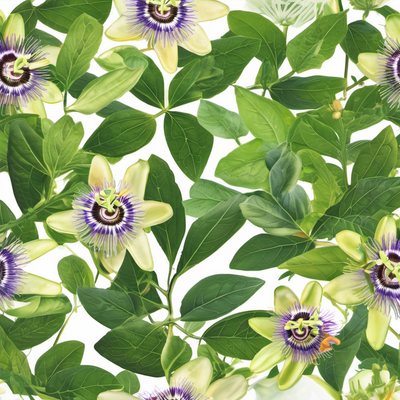
Discover the amazing health benefits of passion flower and how it can improve your overall well-being.
Passion flower, also known as Passiflora incarnata, is a beautiful flowering plant that is native to North America. It has a long history of traditional use by Native Americans for its calming and sedative properties.
The plant gets its name from the unique structure of its flowers, which were said to resemble the passion of Christ. The plant's leaves, stems, and flowers are used to make herbal remedies that are believed to have various health benefits.
Passion flower is low in calories and fat, making it a healthy addition to any diet. It is also a good source of vitamins and minerals, including vitamin C, vitamin A, iron, and magnesium.
Additionally, passion flower contains a variety of bioactive compounds, such as flavonoids and alkaloids, which contribute to its potential health benefits.
Passion flower has long been used as a natural remedy for anxiety and insomnia. It is believed to promote relaxation and reduce feelings of stress and tension.
Research suggests that passion flower may work by increasing levels of a neurotransmitter called gamma-aminobutyric acid (GABA), which helps to calm the brain and reduce anxiety.
Many people find that incorporating passion flower into their daily routine can help them achieve a sense of calm and tranquillity.
In addition to its relaxing properties, passion flower may offer a range of other health benefits. Some studies suggest that passion flower may help to reduce inflammation, improve sleep quality, and support a healthy immune system.
Passion flower has also been used traditionally to alleviate symptoms of menopause, such as hot flashes and mood swings. It may also have potential as a natural treatment for certain digestive disorders, such as irritable bowel syndrome (IBS) and indigestion.
However, more research is needed to fully understand the potential health benefits of passion flower and its effectiveness for specific conditions.
There are several ways to incorporate passion flower into your wellness routine. One popular method is by brewing passion flower tea. Simply steep a teaspoon of dried passion flower leaves in hot water for about 10 minutes, then strain and enjoy.
Passion flower supplements, such as capsules or tinctures, are also available and can be taken as directed. It's important to consult with a healthcare professional before starting any new herbal supplement.
If you prefer a more hands-on approach, you can even try growing your own passion flower plant. It can be a beautiful addition to your garden and provide a fresh supply of leaves and flowers for herbal preparations.
Remember, it's always best to consult with a healthcare professional or herbalist before using passion flower or any other herbal remedy to ensure it is safe and appropriate for your individual needs.
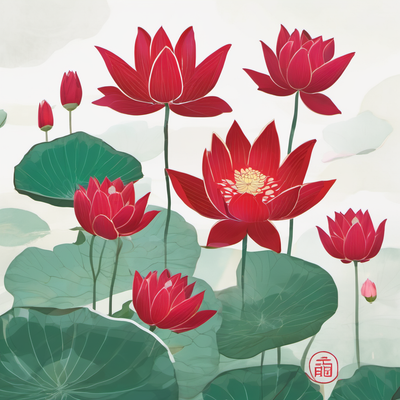
Unveil the symbolic significance and cultural interpretations of red lotus flowers in various contexts.
Red lotus flowers hold great symbolism in Buddhism. They are often associated with the concept of enlightenment and spiritual purity. Just like the lotus flower, which rises from the muddy waters to bloom in all its glory, the red lotus represents the journey towards awakening and the transformation of one's soul. In Buddhist iconography, the red lotus is often depicted as the seat of various deities and is believed to radiate positive energy and blessings. It is also seen as a symbol of compassion and love, as it is believed to be the flower that Avalokiteshvara, the bodhisattva of compassion, holds in his hand.
Another important aspect of the symbolism of red lotus flowers in Buddhism is their connection to the heart. The red color is associated with emotions and passion, and the lotus flower represents the opening of the heart chakra. It is believed that meditating on the red lotus can help one cultivate love, kindness, and empathy towards all beings.
Red lotus flowers also hold significance in Hinduism and ancient Egyptian culture. In Hinduism, the red lotus is associated with the goddess Lakshmi, who is the goddess of wealth, fortune, and prosperity. The red lotus is often depicted as the seat of Lakshmi, symbolizing her blessings and abundance. It is also believed to represent the divine feminine energy and the power of creation.
In ancient Egyptian culture, the red lotus was known as the blue lotus and was associated with the sun god, Ra. It was believed to represent rebirth, renewal, and the eternal cycle of life. The red lotus was often depicted in Egyptian art and was considered a sacred flower.
The red lotus flower holds deep psychological meaning as well. Its vibrant red color is often associated with passion, love, and desire. The sight of a red lotus can evoke feelings of excitement, joy, and sensuality. It is believed that being in the presence of red lotus flowers can uplift one's mood and ignite feelings of passion and creativity.
Moreover, the red lotus is also associated with emotional healing and transformation. It represents the ability to overcome obstacles and adversity, just like the lotus flower rising above the muddy waters. The red lotus teaches us to embrace our emotions, acknowledge our pain, and find inner strength and resilience.
Red lotus flowers have played a significant role in art and literature throughout history. They have been depicted in paintings, sculptures, and poetry, symbolizing various themes such as beauty, purity, and spirituality. In many artworks, the red lotus is portrayed as a focal point, capturing the viewer's attention and conveying a sense of awe and wonder.
In literature, red lotus flowers often serve as metaphors for personal growth, enlightenment, and the journey of the soul. They are used to convey deep emotions and explore the complexities of human existence. The beauty and symbolism of red lotus flowers continue to inspire artists and writers, serving as a powerful source of inspiration and reflection.
If you are drawn to the symbolism and beauty of red lotus flowers, there are several ways to incorporate them into your daily life. One simple way is to bring fresh red lotus flowers into your home or workspace. Their vibrant color and graceful form can instantly uplift the energy of any space and create a sense of tranquility and serenity.
You can also incorporate red lotus flowers into your meditation or mindfulness practice. Find a quiet place, close your eyes, and visualize a red lotus blooming within your heart. Imagine its petals unfolding and radiating love and compassion. Allow yourself to connect with the symbolism of the red lotus and let it inspire you to cultivate these qualities in your interactions with others.
Additionally, you can explore the world of red lotus flower symbolism through art, literature, and music. Read books or poems that feature red lotus flowers, listen to music inspired by their beauty, or even create your own artwork depicting red lotus flowers. Engaging with these creative expressions can deepen your understanding and appreciation of the red lotus and its profound meanings.
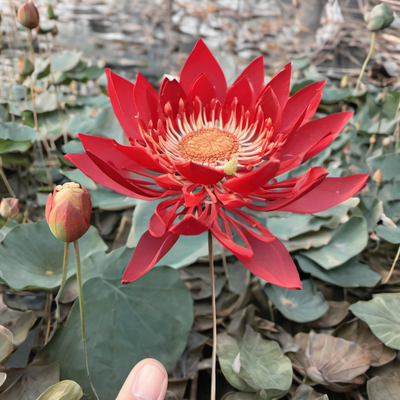
Delve into the deep symbolic meanings associated with red lotus flowers in various cultures and religions.
Red lotus flowers have a rich and fascinating history that dates back centuries. The exact origin of these beautiful flowers is uncertain, but they are believed to have originated in Southeast Asia, particularly in countries like India, Thailand, and Sri Lanka. These regions are known for their lush and vibrant landscapes, making them the perfect environment for lotus flowers to thrive.
In ancient times, red lotus flowers were often associated with creation myths and legends. They were believed to have emerged from the primordial waters, representing the birth of life and the beginning of the world. This symbolism is still prevalent in many cultures today.
In Hinduism and Buddhism, red lotus flowers hold great spiritual significance. They are often associated with deities and are considered sacred symbols of enlightenment and purity.
In Hinduism, the red lotus is closely associated with the goddess Lakshmi, the goddess of wealth, fortune, and prosperity. It is believed that the red lotus represents her divine beauty and grace. The lotus flower is also a symbol of spiritual growth and enlightenment in Hinduism.
Similarly, in Buddhism, the red lotus is highly revered and is often depicted in art and religious ceremonies. It is believed to symbolize the heart of the Buddha and is associated with love, compassion, and purity of mind. The red lotus is also believed to represent the highest level of spiritual attainment, known as enlightenment or nirvana.
In ancient Egypt, red lotus flowers held a special place in religious and cultural practices. They were often associated with the sun god Ra and were considered symbols of rebirth and regeneration.
The red lotus was believed to bloom every morning at sunrise and close at sunset, symbolizing the cyclical nature of life and the eternal renewal of the sun. It was also associated with the concept of resurrection and immortality, as the lotus flower would emerge from the muddy waters of the Nile River and bloom into a beautiful flower.
The red lotus was highly valued and often depicted in ancient Egyptian art and architecture, including temples and tombs. It was seen as a powerful symbol of divine beauty and spiritual transformation.
In Chinese culture, red lotus flowers are considered symbols of love, passion, and purity. They are often associated with summer and are believed to bring good luck and fortune.
The red lotus is also closely associated with the Buddhist concept of enlightenment and is often depicted in Chinese Buddhist art. It is believed to represent the pure and awakened heart, free from attachments and desires.
In traditional Chinese medicine, the red lotus is also valued for its healing properties. It is believed to have various medicinal benefits, such as promoting digestion, improving blood circulation, and reducing inflammation.
Overall, red lotus flowers hold a special place in Chinese culture and are deeply ingrained in the country's traditions and beliefs.
In modern times, the symbolism of red lotus flowers has expanded beyond traditional religious and cultural contexts. They have become popular motifs in art, fashion, and home decor, representing various concepts and emotions.
For some, the red lotus represents strength, resilience, and determination. It is seen as a symbol of overcoming challenges and adversity.
Others interpret the red lotus as a symbol of passion, love, and romance. It is associated with fiery emotions and intense desires.
Additionally, the red lotus can also symbolize transformation and personal growth. It represents the journey of self-discovery and the pursuit of enlightenment.
Overall, the symbolism of red lotus flowers continues to evolve and inspire people in different ways, reflecting the diverse interpretations and meanings attached to these beautiful flowers.
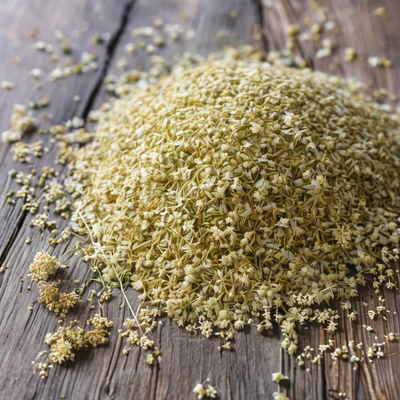
Discover the soothing properties of elderflower tea and how it can promote relaxation and calmness.
Elderflower tea has a long history and is believed to have originated in Europe. The elderflower plant, also known as Sambucus, produces delicate and fragrant flowers that are commonly used to make tea. The practice of brewing elderflower tea dates back centuries, with traditional uses ranging from medicinal remedies to culinary delights. Today, elderflower tea continues to be enjoyed for its unique flavor and potential health benefits.
Another interesting aspect of elderflower tea is its cultural significance. In some European countries, elderflower is considered a symbol of renewal and vitality. It is often used in traditional celebrations and ceremonies, further highlighting its importance in local cultures.
Elderflower tea is not only delicious but also offers a range of potential health benefits. One of the key benefits is its immune-boosting properties. Elderflower contains antioxidants that can help strengthen your immune system, making you less susceptible to common illnesses such as colds and flu.
Additionally, elderflower tea may have anti-inflammatory effects, which can help reduce swelling and ease discomfort. It is also known to have diuretic properties, promoting healthy kidney function and aiding in detoxification.
Moreover, elderflower tea is often used as a natural remedy for respiratory issues. It can help soothe a sore throat, alleviate coughing, and provide relief from congestion. The tea's calming and relaxing effects can also contribute to a better night's sleep, making it an excellent choice for those struggling with insomnia or restlessness.
It's important to note that while elderflower tea has many potential health benefits, it is always advisable to consult with a healthcare professional before using it as a treatment for any specific health condition.
Elderflower tea is renowned for its calming and relaxing effects. The tea contains natural compounds that have a soothing effect on the body and mind, making it a popular choice for those seeking relaxation.
One of the key compounds found in elderflower tea is flavonoids, which are known for their ability to reduce stress and promote a sense of calm. These flavonoids work by interacting with certain receptors in the brain, helping to regulate mood and induce relaxation.
In addition to flavonoids, elderflower tea also contains other compounds like antioxidants and essential oils, which further contribute to its relaxing properties. The gentle aroma of elderflower tea can have a calming effect on the senses, helping to create a peaceful and tranquil atmosphere.
Whether enjoyed in the morning to start the day off on a calm note or in the evening to unwind after a long day, incorporating elderflower tea into your daily routine can be a simple yet effective way to promote relaxation and reduce stress.
There are many ways to incorporate elderflower tea into your daily routine and enjoy its calming benefits. Here are a few ideas to get you started:
- Start your morning with a cup of elderflower tea instead of your regular coffee or black tea. The gentle flavor and soothing properties of elderflower tea can help set a peaceful tone for the day ahead.
- Enjoy a mid-afternoon break with a warm cup of elderflower tea. Take a moment to relax, sip on the tea, and let its calming effects wash over you.
- Use elderflower tea as a base for refreshing iced tea. Simply brew the tea and let it cool, then add ice cubes and a slice of lemon or a sprig of mint for a refreshing twist.
- Get creative in the kitchen and experiment with incorporating elderflower tea into your favorite recipes. From desserts like elderflower-infused cakes and cookies to savory dishes like elderflower-glazed salmon, the possibilities are endless.
Remember to choose high-quality elderflower tea and follow the recommended brewing instructions to fully enjoy its flavor and benefits.
Elderflower tea comes in various forms and flavors, allowing you to explore different options and find your favorite. Here are some popular varieties of elderflower tea:
- Classic Elderflower Tea: This is the most common type of elderflower tea, made from dried elderflower blossoms. It has a delicate floral flavor and a soothing aroma.
- Elderflower Green Tea: For those who enjoy the health benefits of green tea, elderflower green tea combines the antioxidant properties of green tea with the calming effects of elderflower.
- Elderflower Chamomile Tea: Combining the relaxation properties of chamomile with the calming effects of elderflower, this tea is perfect for winding down before bedtime.
- Elderflower Lemon Tea: If you prefer a citrusy twist, elderflower lemon tea is a refreshing option. The combination of elderflower and lemon creates a bright and invigorating flavor profile.
When choosing elderflower tea, opt for organic and sustainably sourced varieties whenever possible to ensure the highest quality and purity of ingredients.
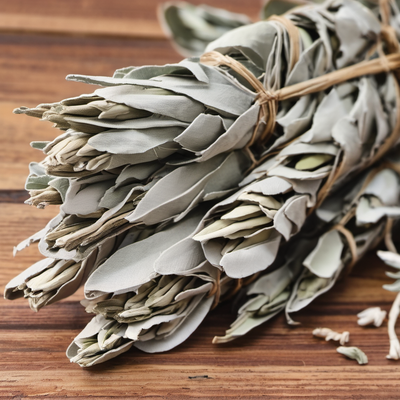
Discover the ancient practice of cleansing with Californian white sage incense sticks and how they can purify your space and spirit.
Californian white sage has a rich history and tradition that dates back centuries. It has been used by Native American tribes for its powerful cleansing properties and spiritual significance. The sage is harvested in California, where it grows abundantly in the wild. The Native Americans would gather the sage leaves and bundle them together to create incense sticks for ceremonial purposes.
The use of Californian white sage for cleansing rituals and spiritual practices has been passed down through generations. It is believed to have the ability to purify and cleanse a space, as well as ward off negative energy and spirits. The smoke produced by burning the sage is thought to carry prayers and intentions to the spiritual realm, creating a sacred and protected environment.
Using Californian white sage incense sticks for cleansing has numerous benefits. Here are some of the key advantages:
- Purification: The smoke produced by burning white sage can purify the air and remove any stagnant or negative energy in a space. It is commonly used to cleanse homes, offices, and other environments.
- Spiritual Connection: Burning white sage can help establish a deeper connection with the spiritual realm. It is often used in meditation, prayer, and other spiritual practices to create a sacred atmosphere.
- Stress Relief: The aroma of white sage has a calming effect on the mind and body. It can help reduce stress, anxiety, and promote relaxation.
- Aromatherapy: The scent of white sage is pleasant and soothing. It can be used for aromatherapy purposes to enhance mood and promote a sense of well-being.
- Ritualistic Tradition: Incorporating white sage into cleansing rituals adds a sense of tradition and sacredness. It allows individuals to connect with ancient practices and honour their spiritual beliefs.
Using Californian white sage incense sticks for cleansing is a simple process. Follow these steps to make the most out of your cleansing ritual:
1. Set your intention: Before lighting the incense stick, take a moment to set your intention for the cleansing. What do you want to release or invite into your space? Focus on your intention and hold it in your mind as you proceed.
2. Find a suitable container: Place the incense stick in a heat-resistant holder or dish. This will catch any ashes that may fall during the burning process.
3. Light the incense stick: Using a match or lighter, light the end of the incense stick. Allow the flame to burn for a few seconds before gently blowing it out. The tip of the stick should smoulder and produce smoke.
4. Begin the cleansing ritual: Once the incense stick is lit, carefully walk around your space, allowing the smoke to reach all corners. Pay special attention to areas that feel energetically heavy or stagnant. Use a feather or your hand to guide the smoke in the desired direction.
5. Express gratitude: As you cleanse, express gratitude for the opportunity to release negative energy and invite positive energy into your space. Visualize any stagnant or negative energy being transformed into light and love.
6. Extinguish the incense stick: Once you have finished the cleansing ritual, carefully extinguish the incense stick by pressing the glowing tip against a heat-resistant surface or gently blowing it out. Make sure it is completely extinguished before leaving it unattended.
When choosing Californian white sage incense sticks for cleansing, there are a few factors to consider:
- Authenticity: Ensure that the incense sticks are made from genuine Californian white sage. Look for reputable sellers or brands that source their sage sustainably.
- Quality: Opt for high-quality incense sticks that are made with pure sage and do not contain any artificial additives or fragrances.
- Size: Consider the size of the incense sticks and how long they burn. This will depend on the size of your space and the duration of your cleansing rituals.
- Packaging: Choose incense sticks that are packaged in a way that preserves their freshness and aroma. Look for sealed packages or containers that protect the sticks from moisture and air.
- Personal Preference: Trust your intuition and select incense sticks that resonate with you. Pay attention to the scent, appearance, and overall energy of the product.
To enhance your cleansing rituals with Californian white sage, consider the following tips:
- Set a regular cleansing schedule: Establish a routine for cleansing your space with white sage. This could be weekly, monthly, or whenever you feel the need to refresh the energy.
- Combine with other cleansing tools: White sage can be used in conjunction with other cleansing tools such as crystals, herbs, or sound instruments. Experiment with different combinations to find what resonates with you.
- Create a sacred space: Designate a specific area in your home or ritual space where you perform your cleansing rituals. This can help create a sense of sacredness and set the intention for your practice.
- Practice mindfulness: As you engage in the cleansing ritual, cultivate a state of mindfulness and presence. Focus on your breath, the scent of the sage, and the energy you are releasing or inviting.
- Dispose of ashes properly: After the incense stick has burned out, allow the ashes to cool down before disposing of them. You can bury them in the earth or scatter them in flowing water as a symbolic act of releasing the energy.
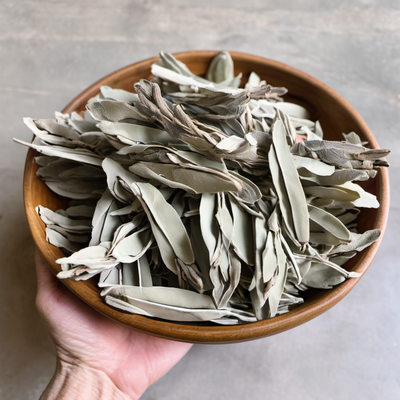
Discover the amazing benefits of burning Californian sage sticks for your overall well-being and spiritual practices.
Burning sage has a long history and tradition in California. Native American tribes have been using sage for centuries for its spiritual and medicinal properties. It is believed that burning sage helps to cleanse the energy and purify the air. The practice of burning sage for spiritual rituals and healing ceremonies has been passed down through generations.
In addition to its spiritual significance, sage burning also has a rich cultural history in California. Many Californians incorporate the burning of sage into their daily lives as a way to connect with nature and promote a sense of peace and harmony.
Burning Californian sage sticks can have various physical benefits. The smoke created by burning sage has antimicrobial properties, which can help to purify the air and eliminate bacteria and viruses. This can be especially beneficial during cold and flu seasons or in spaces where there is a higher risk of airborne illnesses.
In addition, the aroma of burning sage can have a calming effect on the body, reducing stress and promoting relaxation. This can have a positive impact on physical health by lowering blood pressure, improving sleep quality, and boosting the immune system.
Burning Californian sage sticks can also have significant mental and emotional benefits. The act of burning sage can create a sense of ritual and mindfulness, helping to centre the mind and promote focus and clarity. It can be used as a tool for meditation and reflection, providing a calming and soothing environment for inner exploration.
The aroma of burning sage is known to have mood-enhancing properties, promoting feelings of positivity, peace, and emotional well-being. It can help to alleviate anxiety, depression, and other mental health issues, creating a sense of balance and harmony within oneself.
Burning Californian sage sticks is deeply rooted in spiritual practices. It is believed that burning sage helps to cleanse and purify the energy of a space, removing negative energies and promoting positive vibrations. This can be especially useful when moving into a new home, starting a new chapter in life, or after a period of illness or negativity.
Sage burning is also used to support spiritual rituals and ceremonies, such as smudging, where the smoke is used to cleanse and bless people, objects, or sacred spaces. It is believed to create a connection between the physical and spiritual realms, allowing for spiritual growth, healing, and transformation.
To properly burn Californian sage sticks, follow these tips:
- Use a heat-resistant container or abalone shell to catch the ashes.
- Open windows or doors to allow the smoke to exit the space.
- Light the sage stick and let it burn for a few seconds, then gently blow out the flame, allowing the stick to smoulder and produce smoke.
- Move the sage stick in a clockwise direction, focusing on areas that need cleansing or areas where negative energy may be present.
- Set your intention for the sage burning, whether it is for purifying a space, releasing negative energy, or promoting healing and positivity.
- After the sage burning, extinguish the stick by gently pressing it into the heat-resistant container or abalone shell.